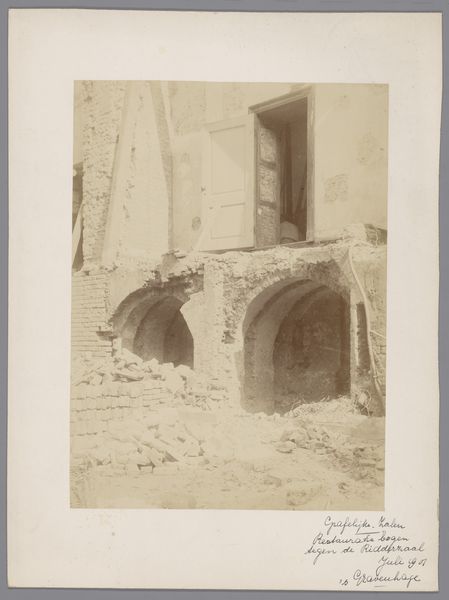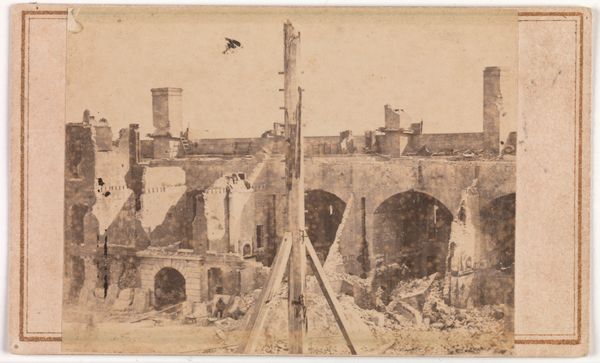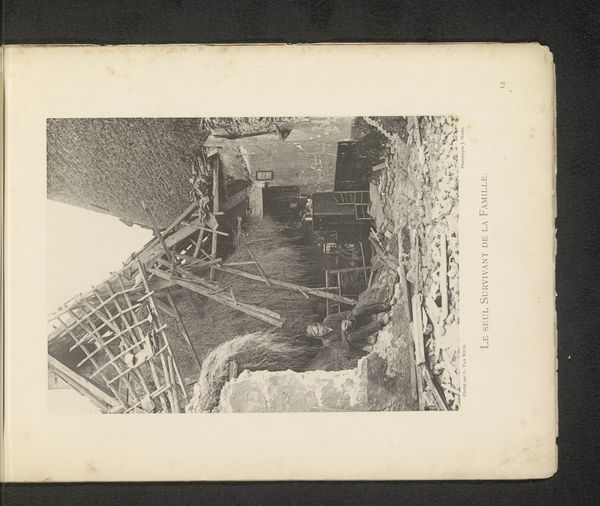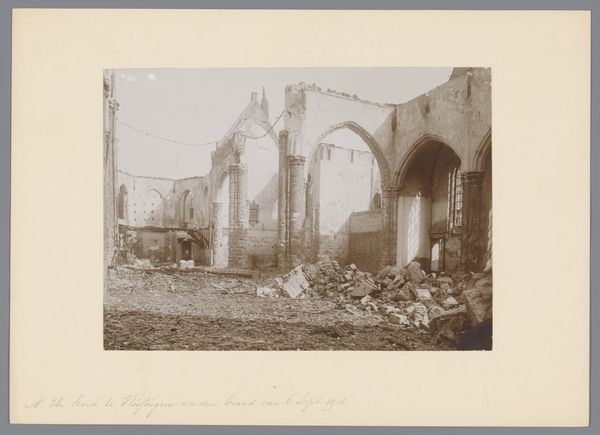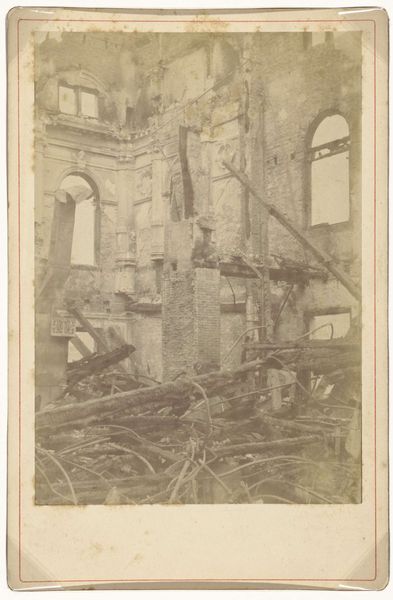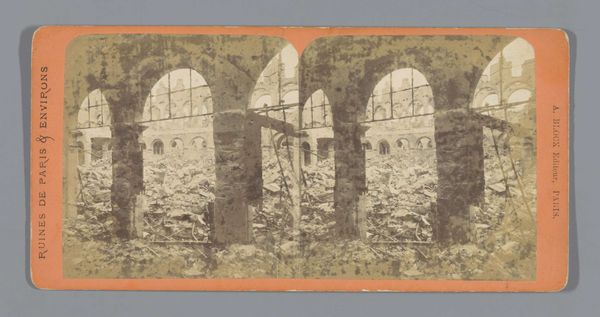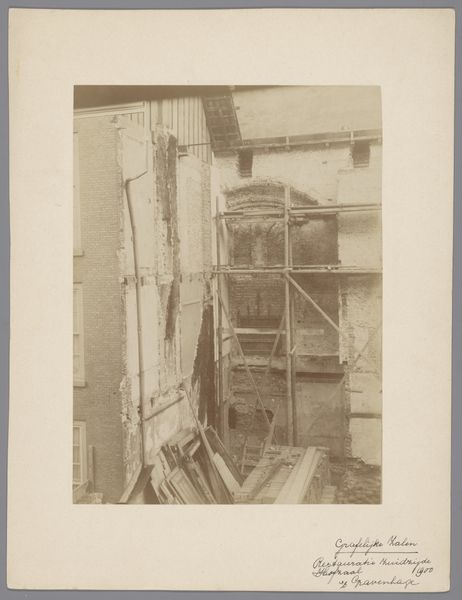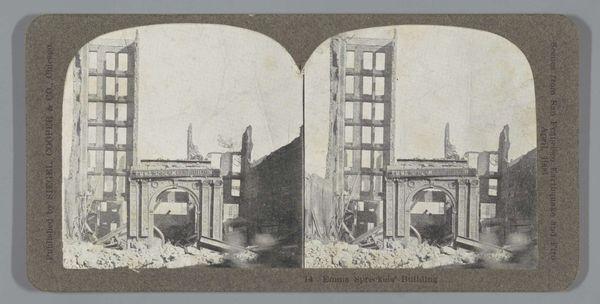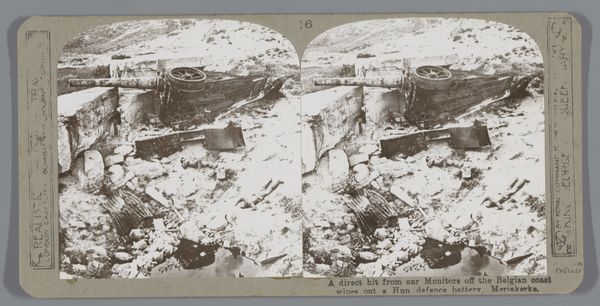
Gezicht op de Rue de Bac in Parijs na de verwoesting door de Commune van Parijs before 1875
0:00
0:00
Dimensions: height 165 mm, width 107 mm
Copyright: Rijks Museum: Open Domain
Editor: This is a photograph, a gelatin silver print entitled "View of the Rue de Bac in Paris after the destruction by the Paris Commune," taken before 1875. The scene is really quite arresting, just ruins and rubble. What do you see when you look at this? Curator: I see a photograph that functions as a potent historical document, reflecting on the socio-political upheaval of the Paris Commune. This isn't just a depiction of destruction; it's a statement about the fragility of order and the visual representation of a brief but incredibly violent moment in French history. How does it make you feel to see the destruction immortalized in art? Editor: It feels very stark, and oddly still. The broken architecture and soft light almost feel… romantic, despite the subject matter. I guess, how complicit was photography at the time? Was it meant to be a neutral recorder, or did the photographers have an agenda? Curator: That's an excellent question. While photography aspired to objectivity, it was inevitably shaped by the photographer's perspective and the prevailing political climate. Images like these served multiple purposes: documenting the events, shaping public opinion, and potentially justifying the government's actions in suppressing the Commune. The decision to frame the destruction in a "romantic" light, as you observed, might even have served to elicit sympathy, or perhaps it was to highlight the scale of change on Paris. Does that complicate your understanding of it? Editor: It does, yes. I see it as less straightforward now. I guess it made me consider how history is made, and who gets to tell it. Curator: Exactly! Photography's role here showcases the powerful interplay between art, politics, and collective memory, something that has informed many contemporary artists' interrogation of visual history. Editor: That's really changed my perspective. It’s more than just rubble; it’s a carefully constructed narrative of a turbulent period.
Comments
No comments
Be the first to comment and join the conversation on the ultimate creative platform.

